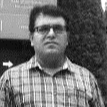International Journal of Intelligent Systems and Applications (IJISA)
IJISA Vol. 10, No. 12, 8 Dec. 2018
Cover page and Table of Contents: PDF (size: 1501KB)
Doppler Ultrasound Based Non-Invasive Heart Rate Telemonitoring System for Wellbeing Assessment
Full Text (PDF, 1501KB), PP.69-79
Views: 0 Downloads: 0
Author(s)
Index Terms
Heart sound, Doppler ultrasound, ECG, heart rate, heart rate variability, electronic stethoscope, LabVIEW
Abstract
Telemonitoring in the field of healthcare has vastly improved the quality of clinical diagnosis and disease prevention by providing timely medical consultation to people living in rural and remote areas. To monitor the health state of a patient certain vital physiological parameter like electrocardiogram (ECG), respiration rate, blood pressure, oxygen saturation, etc. are acquired and analyzed. Listening to the heart sounds (auscultation) is also a quick method to monitor the health state of the patient’s heart. In this paper, we propose the use of a portable Doppler ultrasound sensor for measuring the heart sounds reliably and to transmit the data for further clinical telemonitoring. We have developed an ultrasound-based hardware prototype which is non-invasive in nature and easy to operate. Its portability, high accuracy, low cost, and wireless nature make this device suitable for home-based self-diagnostic applications. The developed prototype was successfully able to capture both fundamental heart sounds S1 and S2 reliably and transfer the signal wirelessly to the LabVIEW-based monitoring and data logging unit. This unit extracts clinically useful health information like heart rate (HR), R-R interval and heart rate variability (HRV) using signal processing algorithms. Health information is then transmitted via the Internet to a distant hospital for further improved clinical diagnosis and consultancy. The prototype was validated on 40 healthy males in the age group of 25-35 years, and the results show an overall accuracy of 96.74% in HR detection when compared with an ECG sensor, a photoplethysmograph (PPG) sensor, a pulse oximeter device and manual auscultation.
Cite This Paper
Abdullah Bin Queyam, Sharvan Kumar Pahuja, Dilbag Singh, "Doppler Ultrasound Based Non-Invasive Heart Rate Telemonitoring System for Wellbeing Assessment", International Journal of Intelligent Systems and Applications(IJISA), Vol.10, No.12, pp.69-79, 2018. DOI:10.5815/ijisa.2018.12.07
Reference
[1]S. Patel, H. Park, P. Bonato, L. Chan, and M. Rodgers, “A review of wearable sensors and systems with application in rehabilitation.,” J. Neuroeng. Rehabil., vol. 9, p. 21, Apr. 2012.
[2]S. McGee and S. McGee, “The First and Second Heart Sounds,” in Evidence-Based Physical Diagnosis, Elsevier, 2012, pp. 325–335.
[3]J. Naish and D. Syndercombe Court, Medical Sciences, Second Edition, Elsevier, 2014.
[4]E. Kaniusas, Biomedical Signals and Sensors II. Berlin, Heidelberg: Springer Berlin Heidelberg, 2015.
[5]E. M. Brown, Heart Sounds Made Easy. Churchill Livingstone/Elsevier, 2008.
[6]G. Zhang, M. Liu, N. Guo, and W. Zhang, “Design of the MEMS Piezoresistive Electronic Heart Sound Sensor.,” Sensors (Basel)., vol. 16, no. 11, Nov. 2016.
[7]S. Leng, R. S. Tan, K. T. C. Chai, C. Wang, D. Ghista, and L. Zhong, “The electronic stethoscope.,” Biomed. Eng. Online, vol. 14, p. 66, Jul. 2015.
[8]P. J. Kilner, “Imaging congenital heart disease in adults.,” Br. J. Radiol., vol. 84 Spec No, no. Spec Iss 3, pp. S258-68, Dec. 2011.
[9]P. Kuchynka et al., “The Role of Magnetic Resonance Imaging and Cardiac Computed Tomography in the Assessment of Left Atrial Anatomy, Size, and Function,” Biomed Res. Int., vol. 2015, pp. 1–13, Jul. 2015.
[10]K. Dickstein, “Clinical utilities of cardiac MRI,” E-Journal Cardiol. Pract., vol. 6, 2008.
[11]J. M. Felner, The First Heart Sound. Butterworths, 1990.
[12]J. M. Felner, The Second Heart Sound. Butterworths, 1990.
[13]A. Sa-ngasoongsong, J. Kunthong, V. Sarangan, X. Cai, and S. T. S. Bukkapatnam, “A Low-Cost, Portable, High-Throughput Wireless Sensor System for Phonocardiography Applications,” Sensors, vol. 12, no. 12, pp. 10851–10870, Aug. 2012.
[14]L. Torres-Pereira, P. Ruivo, C. Torres-Pereira, and C. Couto, “A noninvasive telemetric heart rate monitoring system based on phonocardiography,” in ISIE ’97 Proceeding of the IEEE International Symposium on Industrial Electronics, 1997, pp. 856–859.
[15]A. Bin Queyam, S. K. Pahuja, and D. Singh, “Non-Invasive Feto-Maternal Well-Being Monitoring: A Review of Methods,” J. Eng. Sci. Technol. Rev., vol. 6, no. 5, pp. 7–14, 2017.
[16]M. Ruffo et al., “Non Invasive Foetal Monitoring with a Combined ECG - PCG System,” in Biomedical Engineering, Trends in Electronics, Communications and Software, InTech, 2011.
[17]A. K. Mittra and N. K. Choudhary, “Development of a Web-Based Fetal Monitoring System: An Innovative Approach,” Biomed. Eng. Appl. Basis Commun., vol. 20, no. 1, pp. 27–37, Feb. 2008.
[18]R. S. Anand, “PC based monitoring of human heart sounds,” Comput. Electr. Eng., vol. 31, no. 2, pp. 166–173, Mar. 2005.
[19]M. Moghavvemi, B. . Tan, and S. . Tan, “A non-invasive PC-based measurement of fetal phonocardiography,” Sensors Actuators A Phys., vol. 107, no. 1, pp. 96–103, Oct. 2003.
[20]V. S. Chourasia and A. K. Tiwari, “Development of a Signal Simulation Module for Testing of Phonocardiography Based Prenatal Monitoring Systems,” in 2009 Annual IEEE India Conference, 2009, pp. 1–4.
[21]A. Jimenez-Gonzalez and C. J. James, “Blind source separation to extract foetal heart sounds from noisy abdominal phonograms: a single channel method,” in 4th IET International Conference on Advances in Medical, Signal and Information Processing (MEDSIP 2008), 2008, pp. 1–4.
[22]A. Jimenez-Gonzalez and C. J. James, “Source separation of Foetal Heart Sounds and maternal activity from single-channel phonograms: A temporal independent component analysis approach,” in 2008 Computers in Cardiology, 2008, pp. 949–952.
[23]A. Jimenez-Gonzalez and C. J. James, “Extracting sources from noisy abdominal phonograms: a single-channel blind source separation method,” Med. Biol. Eng. Comput., vol. 47, no. 6, pp. 655–664, Jun. 2009.
[24]F. Safara, S. Doraisamy, A. Azman, A. Jantan, and A. R. Abdullah Ramaiah, “Multi-level basis selection of wavelet packet decomposition tree for heart sound classification,” Comput. Biol. Med., vol. 43, no. 10, pp. 1407–1414, Oct. 2013.
[25]V. S. Chourasia and A. K. Mittra, “Wavelet-based denoising of fetal phonocardiographic signals,” Int. J. Med. Eng. Inform., vol. 2, no. 2, p. 139, 2010.
[26]D. Gradolewski and G. Redlarski, “Wavelet-based denoising method for real phonocardiography signal recorded by mobile devices in noisy environment,” Comput. Biol. Med., vol. 52, pp. 119–129, Sep. 2014.
[27]V. S. Chourasia, A. K. Tiwari, and R. Gangopadhyay, “Interval type-2 fuzzy logic based antenatal care system using phonocardiography,” Appl. Soft Comput., vol. 14, pp. 489–497, Jan. 2014.
[28]D. L. Donoho, “De-noising by soft-thresholding,” IEEE Trans. Inf. Theory, vol. 41, no. 3, pp. 613–627, May 1995.
[29]C. Davis, M. Bender, T. Smith, and J. Broad, “Feasibility and Acute Care Utilization Outcomes of a Post-Acute Transitional Telemonitoring Program for Underserved Chronic Disease Patients,” Telemed. e-Health, vol. 21, no. 9, pp. 705–713, Sep. 2015.
[30]N. Varma, J. P. Piccini, J. Snell, A. Fischer, N. Dalal, and S. Mittal, “The Relationship Between Level of Adherence to Automatic Wireless Remote Monitoring and Survival in Pacemaker and Defibrillator Patients,” J. Am. Coll. Cardiol., vol. 65, no. 24, pp. 2601–2610, Jun. 2015.
[31]A. Bin Queyam, S. Kumar Pahuja, and D. Singh, “Quantification of Feto-Maternal Heart Rate from Abdominal ECG Signal Using Empirical Mode Decomposition for Heart Rate Variability Analysis,” Technologies, vol. 5, no. 4, p. 68, Oct. 2017.
[32]A. Bin Queyam, S. K. Pahuja, and D. Singh, “LabVIEW-based Virtual Instrument for Simulation of Doppler Blood Flow Velocimetry of Umbilical Artery,” J. Instrum. Technol. Innov., vol. 6, no. 1, pp. 1–9, 2016.
[33]M. Singh and A. Bin Queyam, “Stress Detection in Automobile Drivers using Physiological Parameters: A Review,” Int. J. Electron. Eng., no. 2, pp. 1–5, 2013.
[34]M. Singh and A. Bin Queyam, “Correlation between Physiological Parameters of Automobile Drivers and Traffic Conditions,” Int. J. Electron. Eng., no. 2, pp. 6–12, 2013.
[35]M. Singh and A. Bin Queyam, “A Novel Method of Stress Detection using Physiological Measurements of Automobile Drivers,” Int. J. Electron. Eng., no. 2, pp. 13–20, 2013.


